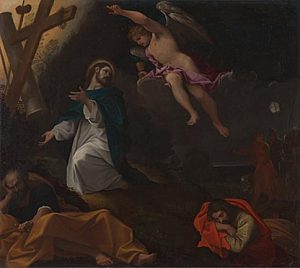The Ups and Downs of Working Freelance: Dealing with Denis Mahon
In 1997, I thought I should contact Denis Mahon, “the distinguished art historian”, in relation to my research into Alexander Gordon’s collection. It contained a number of paintings by 17th-century Italian artists who were of particular interest to Mahon. Of additional significance, was the fact that William Buchanan, the Dalmarnock-born art dealer, was Gordon’s brother-in-law.
Volume Two of Buchanan’s Memoirs, which was published in 1824, lists most of the paintings acquired for Gordon. The collection was housed in Gordon’s mansion on Glasgow’s Buchanan Street, and remained there until he and his family moved to Edinburgh. There were three works by, or attributed to, Guido Reni (1575-1642). Reni is one of the painters Mahon himself collected, researched, and wrote about.
Fortunately, Buchanan provides some descriptions of the paintings and their provenance. This information, in addition to the illustrations created at a later date, by one of Gordon’s daughters, enabled me to provide the first detailed account of the early history of the collection in Volume One of The Wealth of a City: A ‘Glance’ at the Fine Art in Glasgow, 1641-1830, which was published in 2010.
I included some of the information relating to the Reni Fortuna, which Gordon owned, as this provenance did not appear in any of the published works on the artist at the time. I felt quite pleased that my research had helped to identify an important painting which has been located in a house in Glasgow, in the early nineteenth century.
Looking back, it does seem odd that no-one else, or at least none of “the distinguished art historians”, had noticed the facts that Buchanan had included in his Memoirs. As I point out in The Wealth of a City, and elsewhere, many of Glasgow’s nineteenth- and twentieth-century historians and writers knew, and wrote, about the collection, and the collector.
In my letter to Mahon, I also referred to one of the paintings he owned. It had been owned by Robert Napier, one of the other nineteenth-century collectors I have researched and written about. The work, Ludovico Carracci’s The Agony in the Garden, is now in The National Gallery in London.
Reproduced, courtesy of The National Gallery, London.
Mahon never had the courtesy to reply to my letter, so just imagine my surprise when, a few years later, my research relating to the Reni Fortuna in Gordon’s collection was used in an article co-authored by Stephen Pepper and Mahon. It was published in The Burlington Magazine without my permission or prior knowledge. I was not even acknowledged as the source of the information. Caroline Elam, then-editor of the publication, told me over the ‘phone that she “had taken the liberty” of using my research without asking me. This matter is covered elsewhere on this site.

